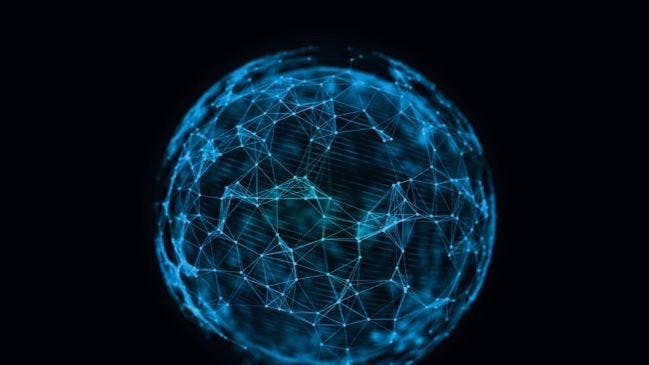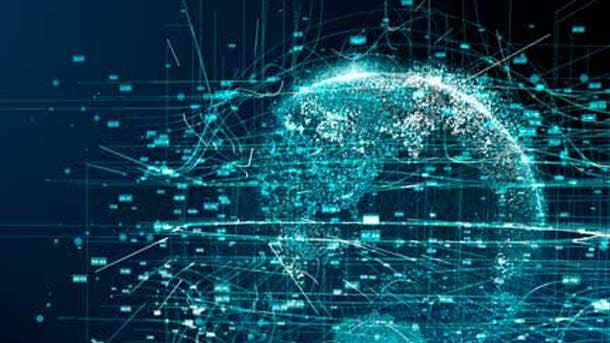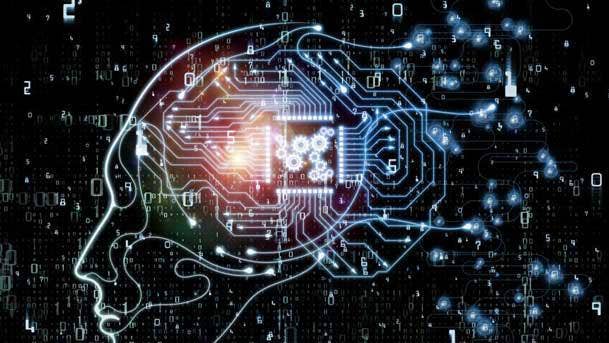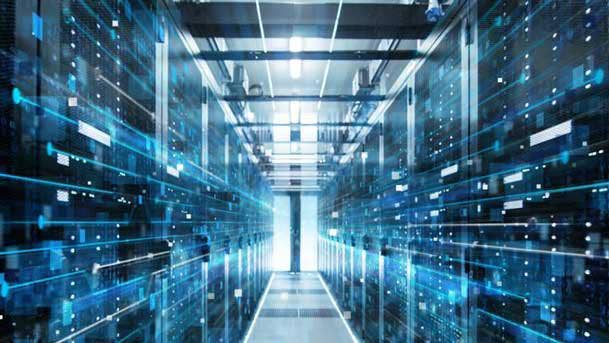Futurist Kevin Surace On AI, IoT And Cloud: Solution Providers Have To Embrace The ‘Big Disruption’
‘I do not have a crystal ball. … All I can do is help us take a little journey together three years, five years, 10 years into the future, maybe 20, and say, with these technologies coming along, what does the future look like for us? What does it look like for our businesses,’ says futurist and entrepreneur Kevin Surace at the NexGen 2021+ conference.
AI’s Impact On Businesses And Solution Providers
While most people’s understanding of artificial intelligence is as likely to come from watching science fiction movies such as “Ex Machina,” AI is in reality already an important and growing part of everyone‘s daily lives. And the impact—good or bad—will only continue to grow, said Kevin Surace, futurist, inventor and entrepreneur.
Surace, who has given keynotes on the future of technology at events from conferences to the TED stage to the U.S. Congress, Sunday helped open the NexGen 2021+ conference, held this week in Anaheim, Calif., with a look at how the interactions between AI, the Internet of Things and the cloud not only impact businesses and ordinary citizens but also the solution providers who help their customers navigate the future of technology. The NexGen 2021+ conference is hosted by CRN parent The Channel Company.
Surace early on in his keynote said that he does not have all the answers about the impact of future technology.
“I do not have a crystal ball. All I can do as a ‘futurist,’ all I can do is help us take a little journey together three years, five years, 10 years into the future, maybe 20, and say, with these technologies coming along, what does the future look like for us? What does it look like for our businesses?”
Surace said that some time ago he noted that AI was about to change our lives forever, and the brightest future awaits those who embrace this change with fervor.
“And I really meant it then. And I mean it today. We see people in our industry, in fact in all industries, at the customer level, at the MSP level, saying, ‘Well, artificial intelligence stuff, I don’t know when it’s going impact me, I don’t know how it’s going to.’ Trust me. It can impact you today. It can make money for you today. It can help your customers move forward today.”
Here is what Surace had to say about the future of AI and related technologies.

How To Become The Most Valuable Trusted Adviser
Surace identified four levels of trusted advisers, each of which offers different levels of value to customers.
The first level is fixing things that are broken. “That‘s kind of the level, one of trusted adviser,” he said. ”They call you because it’s broken. That’s fine.”
At level two, the trusted adviser is solving general problems, Surace said.
“You’re really starting to think about, generically, some bigger problems with the business,” he said.
At level three, one provides perspective on what‘s going on in the industry and how it might overlap with customers’ businesses.
Level four is where one starts providing vision, Surace said.
“In fact, you‘re leading them to new places. In every talk about technologies today, think about how could they apply with me and my business so that I can become my customer’s trusted adviser at a level-four status. Let’s think about it that way.”

The Era Of ‘Corporate Mass Extinction’
Surace said that humanity has entered the era of “corporate mass extinction,” one best exemplified by the death of brick-and-mortar retailing.
“The reason it‘s dying is truly technology,” he said. ”Now people will say, well, Amazon is killing it. Well, actually, what is Amazon? Amazon is a pure technology play. You’ve got immense amounts of AI. You’ve got AI in the warehouses, you’ve got automation in the warehouses, you’ve got AI guessing what to show you next, what they want to share with you next, what they want to sell you next. And you have AI in product transportation. This is nothing but a technology play on every single level that it could be. It is IoT. It is cloud. It is AI at the highest level. And that allows you to order an item for $5.67 and have it delivered by tomorrow morning.”
Amazon is crushing people who do not embrace that technology, said Surace. And while some late-comers like Walmart have transformed, others like JCPenney did not embrace the technology.
“You have to embrace technology,” he said. And you have to embrace what we call the ‘big disruption.’”
There are three things—AI, IoT, and cloud—that must all be embraced to succeed in the future, Surace said.
“All three are needed,” he said.
Most MSPs‘ customers have embraced the cloud, Surace said.
IoT, AI and the cloud together are “the most powerful technology set of forces we have ever seen in our lifetime,” Surace said. “And all three need to work together. That‘s what’s fascinating. One without the other doesn’t work very well.“

The Urgency Of IoT
Surace said MSPs can expect to see a trillion IoT devices in place in 20 years, measuring everything from the temperature in a room to the performance of jet engines, HVAC, any kind of equipment, any kind of process, any kind of people movement..
The more something can be measured, the more one can do with that something, Surace said.
“You remember the old adage?” he said. ”If I can‘t measure it, I can’t fix it. I can’t address it. I can’t make it better. Well, now with IoT, technically we could measure anything we want. Anything. And you as their trusted advisers should darn well figure out what it is we can measure in their businesses so that they can measure it, so they can make their businesses better. And their CEOs and CIOs will thank you.”

IoT To AI To Cloud To Digital Transformation
A trillion devices over the next 10 to 20 years are going to generate a petabyte of data every second, Surace said.
“When we have a petabyte per second of data, we had better darn well have some AI to sort through it and figure out what I care about and what I don‘t,” he said. ”It’s too much data. We as humans can’t deal with this incredible barrage of data that is already coming in, and more is about to come at us.”
And as businesses combine IoT and AI in the cloud, they have digitized their entire business, Surace said.
“We‘re digitizing everything,” he said. ”And we have to so that we can make it better. ... We will have no choice.”
Surace said Salesforce best defined digital transformation as the process of using digital technologies to create new business processes, new business cultures and customer experiences to meet changes in business and market requirements.
While people can talk about technology for technology‘s sake, digital transformation is about changing business processes, improving culture for employees and improving customer experiences, he said.

AI Already Having Huge Success
AI is already having huge success in such spaces as banking, financial trading, speech recognition and image recognition. It is so pervasive that most people don‘t notice it because it is such a big part of everyday living, Surace said. That, he said, happens with all great technologies such as automobiles, radio and the internet.
“The internet quickly became just the fabric of everyday living,” he said. ”In fact, if it goes out, we don‘t know what to do. We actually stop. Isn’t that interesting that business completely stops if the internet goes down when 25 years ago we didn’t need it at all?”
The same will happen with AI, although not in the way most people see the technology, Surace said.
He divided AI into two types: general and narrow.
General AI is the general public‘s idea of the technology, which typically stems from watching movies like “Ex Machina.”
“Every time you talk AI and someone rolls their eyes, they‘re thinking that,” he said. ”They’re thinking ‘Ex Machina.’ That’s not what we do. What would we do in the industry is very, very, very narrow. It’s driven by industry. It’s one task and it’s practical. That’s what professionals focus on. We have a set of data we can learn from, and there’s more data coming in, and you want to map against what we learned so that we can perform whatever it is, better, period, full stop. That’s all we do.”
There have been hundreds of AI algorithms designed over the past 50 years, all of which are valuable, and which have value when used with the cloud, Surace said. That differs from the past where a university would design an algorithm with amazing math to solve one problem but had no cloud to use with it, he said.
“But with the cloud, I can rent 10,000 CPUs or GPUs for an hour for under $10,000,” he said. ”So I can solve immense problems now for a little bit of the time I needed to solve that problem [in the past]. The cloud changed our ability to look at these algorithms and get excited about them again. And so everyone was excited about even the old algorithms again because they work now that we‘ve got cloud.”

Building An AI And Neural Net
Building and using a neural net, one of the keys to AI, requires a few steps, Surace said.
The first is to collect millions, many hundreds of billions, of pieces of data. Unfortunately, he said, few companies have clean data. “It’s a mess,” he said. ”They change databases, they change tables, everything’s different. And now there’s an entire industry of doing nothing but going in and cleaning the data. Why? Because the data is nuts. And that’s a real problem. So you have to start with an excellent database, an excellent set of data in order to apply any ground rules to learn something useful from that data.”
The second step is to sort that data, which has likely been input by different people using different models.
Finally, one has to find something useful from that data, Surace said.
What users are looking for in essence are correlations, or looking at past changes to predict others, he said. But that is difficult. An easy example of a correlation would be, when people smoke, they have a higher incidence of cancer. However, he said, there are a lot of spurious correlations that require humans to sort through and say whether they make sense.
He cited as an example a project in which IBM ran natural language processing on doctors‘ notes to look for correlations on cancer but found it didn’t work. For instance, a doctor might have written, “Mary claims she is not smoking.” But half of the doctors mean to say ”Mary is no longer smoking,” while the others have meant to say, ”Mary is smoking, but she tells me she is not smoking.”
“The note was the same, yet the meaning was different,” he said. ”And if the doctor‘s gone, we have no way of knowing what that doctor meant. But for many doctors, that was their hint that ’Mary says, ‘wink, wink,’ no longer smoking,’ meaning ’Mary’s smoking.’ So this is poor data. And if it’s 180 degrees out of phase, I can no longer get reasonable correlations.”
In the end, this is a very hard problem to solve because of the biases of the humans plus the data, Surace said.

Trying To Make Sense Of The Data
There are three ways AI systems can learn from data, Surace said.
The first is supervised learning such as when a user gives an object a name and then feeds it many different photos of the thing so that the system learns to associate the pictures with the names, he said.
The second is unsupervised learning where one item is associated with another item with no regard to what any item is called, he said.
The third is reinforcement learning, which is reward-based, similar to how a mouse learns to navigate a maze by being rewarded with cheese when it goes in the right direction, he said. “[The mouse] just got to do the same task thousands of times, and it got really good at one task,” he said. ”That‘s what we’re doing with AI today. That’s what we’re doing with reinforcement learning.”
The training of AI leads to such functions as robotic process automation, which allows the automation of any process without touching the application, Surace said.
“So I can take 10 applications that used to take a person an hour and now it‘s just fully automated with RPA, which is absolutely fantastic. ... It’s faster and smarter. It’s 24 by seven. It’s factual. These are all reasons that we want to use this. And virtually any repetitive human task can leverage this technology, which is relatively light AI. And it’s not intrusive to your applications with all different kinds of frameworks,” he said.

Real-World Uses Of AI
Surace cited several examples of where AI and RPA are already being used.
In finance, for instance, AI lets lenders write more loans to clients who might otherwise appear to be unqualified candidates. Workday already predicts whether an employee will stay or leave. Some systems like Facebook are completely AI, as are certain industries like legal research, he said.
In other examples, agriculture uses pictures from drones to better understand what parts of fields need water or fertilizer in order to control expenses. Other big users of AI include automobile manufacturers, health care, and companies like Google and Uber, he said.
Surace also cited a system combining artificial reality, AI and the cloud working together as a way to train users to do a complicated task like repairing a jet engine much more quickly than traditional training methods.
“We‘ve got AR, cloud and AI all working together,” he said. ”And instead of training these people for a year before they work on a jet engine, they could be working within a couple of weeks. Why? They can’t do anything wrong. The glasses, AI, etc., will say, ’No, Bill, don’t grab that wrench, grab this other wrench. This is what you do next.’ And it will give them an example. It’s a really fascinating use of technology.”

AI And Security
Ransomware has become a major issue, Surace said, adding that it is already putting lives at risk and giving rise to the term “killerware.”
AI is starting to be deployed in networks looking for unusual activity that would indicate a cybersecurity breach, he said.
“AI is really looking for unusual activity, activity we would not expect from that sysadmin or from our employees or whatever,” he said. ”It‘s good. In fact, it’s quite good, but it’s not good enough to keep ransomware from growing through the roof, including companies who have already paid up. And the AI is getting way better. And what happens? The ransomware, the kids in the basement, whatever, are also getting better and then trying to thwart this. They’re trying to sneak in and actually just do things that look like an employee. Because if you look very much like what an employee would be doing, it’s very hard to distinguish you.”
The problem is not the system, Surace said.
In a hospital, for instance, the problem lies with doctors who are wonderful medical practitioners but terrible security specialists with access to every patients‘ medical records and the authority to change or delete them, he said.
“They do not understand network security, and every single one of them use their daughter‘s name as their password,” he said ”And 80 percent of them, I can find their credentials on the dark web.”
Surace said about 84 percent of all phishing attacks are aimed at finding the credentials that will allow cybersecurity attacks, making credentials a priority to secure. However, he said, a fix would require IT systems that could ensure 100 percent accuracy in identifying authorized users.
Unfortunately, the identification information needed for such accuracy could not be stored in a network because networks are hackable, he said. Keeping such information available online means that information can always be decrypted even when it is encrypted by using the applications that wrote the data, he said.